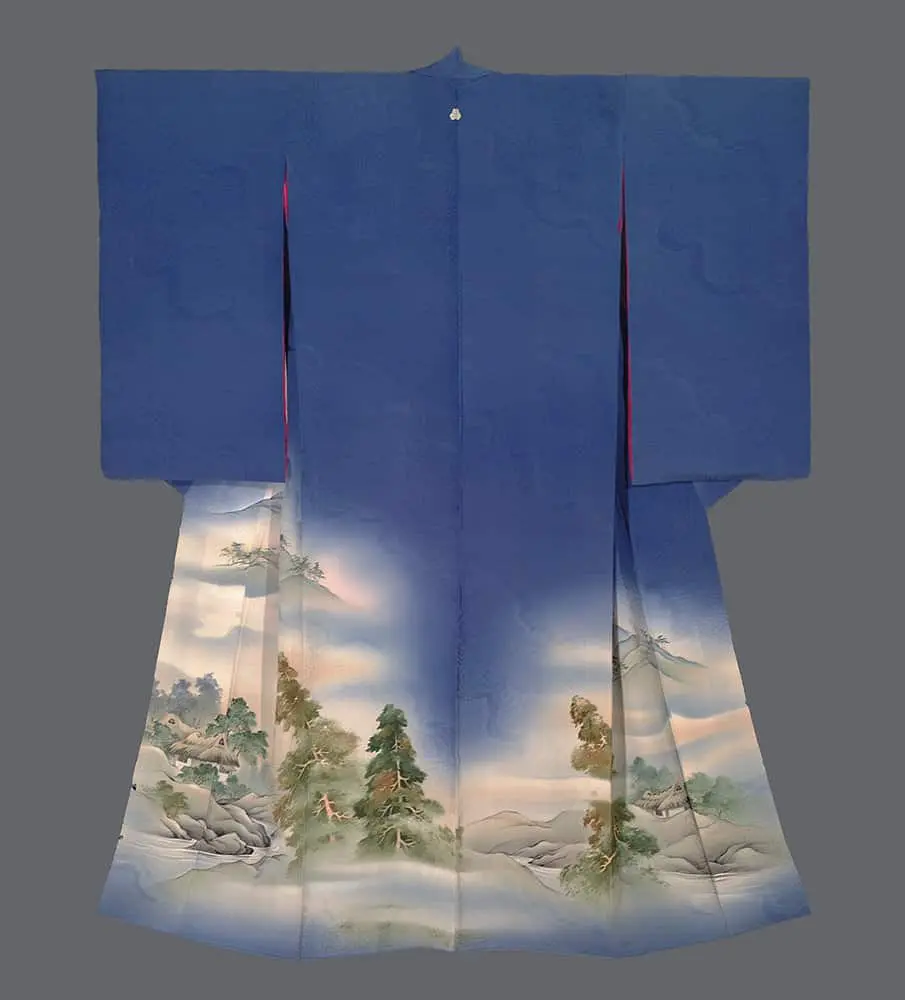This silk kimono exemplifies the sophisticated landscape painting tradition of early 20th century Japanese textile art, presenting a masterful composition that evokes the aesthetic principles of classical Japanese painting. The garment features a dramatic color transition from deep cobalt blue in the upper portion to soft, luminous whites and pale blues below, creating an atmospheric effect reminiscent of traditional sumi-e ink paintings and the misty landscapes found in Rinpa school works.
The painted scenery depicts an idyllic pastoral scene with a thatched-roof farmhouse nestled among verdant trees, rocky outcroppings, and a meandering stream. The composition demonstrates the Japanese artistic concept of ma (negative space), with vast areas of subtle gradation allowing the detailed landscape elements to breathe and command attention. The delicate rendering of foliage in various shades of green, the careful modeling of rocks with soft gray washes, and the flowing water depicted in pale blue create a sense of seasonal harmony, possibly representing late spring or early summer.
The rinzu silk background provides a lustrous, subtly textured surface that enhances the painted elements, while the single family crest (mon) near the collar indicates this was a formal garment for ceremonial occasions. The artistic style reflects influences from both classical Japanese landscape painting and the naturalistic tendencies that emerged during the Taisho and early Showa periods, when kimono design began incorporating more realistic and atmospheric approaches to nature scenes. This piece represents the height of kimono as wearable art, transforming the body into a canvas for contemplative landscape imagery that embodies the Japanese aesthetic ideals of wabi-sabi and mono no aware - finding beauty in transience and the subtle melancholy of natural cycles.
It measures 49 inches (124 cm) from sleeve-end to sleeve-end and stands at 61 inches (155 cm) tall.
.avif)
















